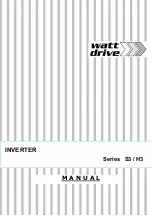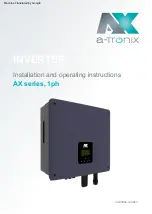
1 System Description
In any precision motor control application it becomes necessary to assess angular position of the motor shaft to
ensure overall control of the system matches expectation. Inaccurate position data may result with impaired user
safety, wider manufacturing tolerances and yield loss, navigation failures, or damaged equipment. As a result,
it becomes essential in many applications to constantly monitor and evaluate angular position. For example,
in autonomous mobile robots and robotic lawnmowers, the ability to match the angular rotation speed of each
wheel is critical for proper navigation.
Although various technologies exist for angle measurement, this design demonstrates the use of two standard
one dimensional (1D) linear Hall-effect sensors or a three dimensional (3D) linear Hall-effect sensor. Each
technique is subject to various challenges which must be addressed.
Table 1-1. Angle Measurement Methods
METHOD
ADVANTAGES
DISADVANTAGES
3D Hall-effect (Method
demonstrated in this design)
•
Single sensor can capture entire magnetic field
•
Sensor placement is flexible for compact
solutions
•
Angle position is available at system power up
•
Immune to dirty working conditions
•
Depending on range and placement, magnetic
field may be non-ideal
•
Magnet cost
1D Hall-effect (Method
demonstrated in this design)
•
Inexpensive sensors with analog output
•
Compact solution size
•
Angle position available at system power up
•
Immune to dirty working conditions
•
Requires precise sensor placement for
accurate phase alignment
•
Magnet cost
Hall-effect Incremental Encoding
•
Captures speed and direction of rotating
magnet
•
Simple calculation for incremental angle
changes
•
Immune to dirty working conditions
•
Requires a multipole ring magnet
•
Provides incremental angle position only and
position at power up is unknown
Inductive Sensed Angle Encoding •
Immune to influence from nearby fixed
permanent magnets
•
Immune to dirty working conditions
•
Requires precise design of sense coil and
metal target
Optical Encoding
•
Provides highest resolution data
•
Solution size tends to be bulky
•
Must operate in clean conditions
Stepper Motor Pulse counting
•
Simple implementation
•
Precision control can be achieved using geared
configurations
•
Step size jitter provides uncertainty in absolute
position
•
Start position is unknown
Sensorless Motor Control
•
Does not require additional sensing
components
•
Does not detect
Motor position when stopped
•
Does not work well at low speeds
•
Can be difficult to manage at very high speeds
•
Requires complex calculations
Not all solutions are able to use optical encoding due to contaminants such as dust, dirt, and grime. Optical
solutions tend to become bulky to create sealed environments for the sensor, which do not fit well into compact
designs.
For inductive and linear Hall-effect based solutions, the premise of the angle calculation uses sinusoidal outputs
which are 90° out of phase from each other.
System Description
2
Absolute Angle Encoder Reference Design With Hall-Effect Sensors for
Precise Motor Position Control
Copyright © 2022 Texas Instruments Incorporated



































